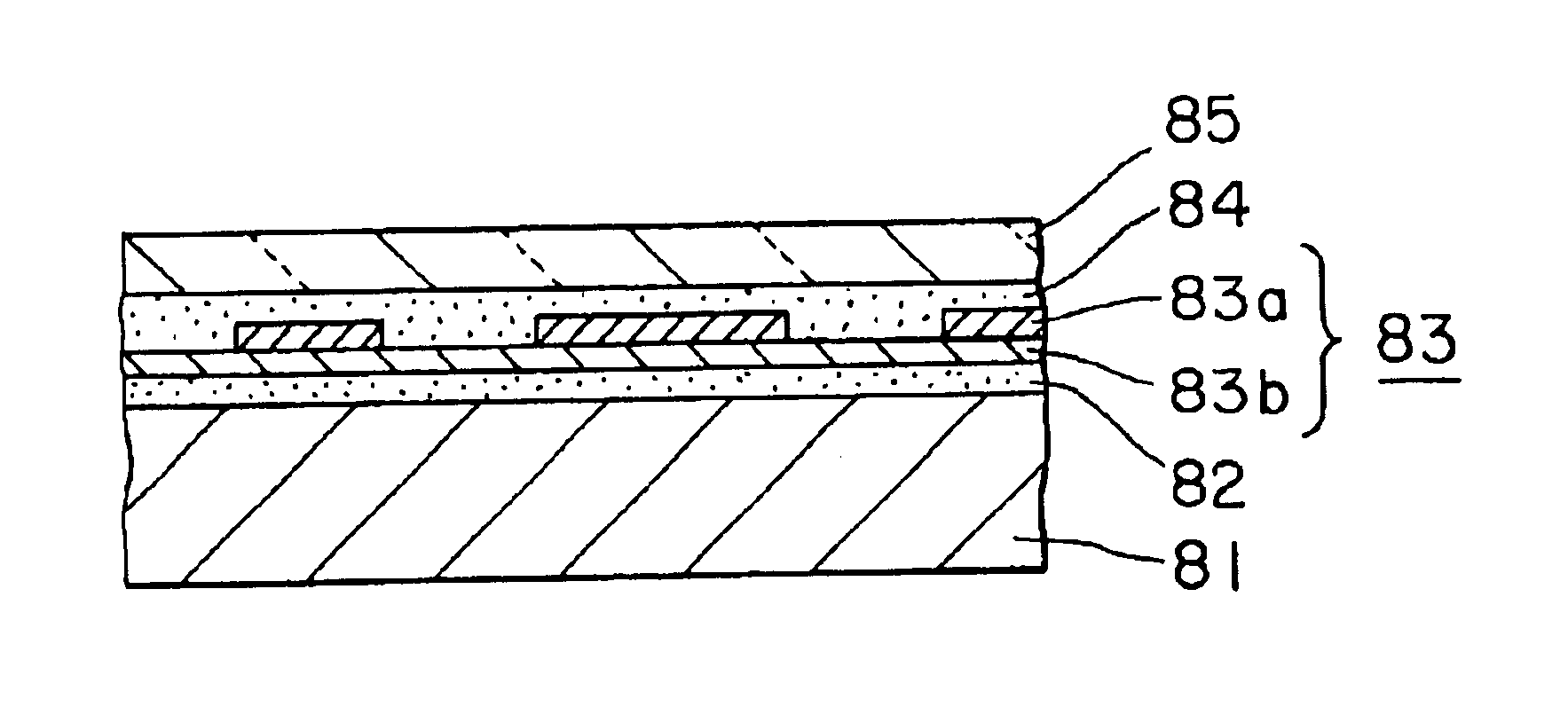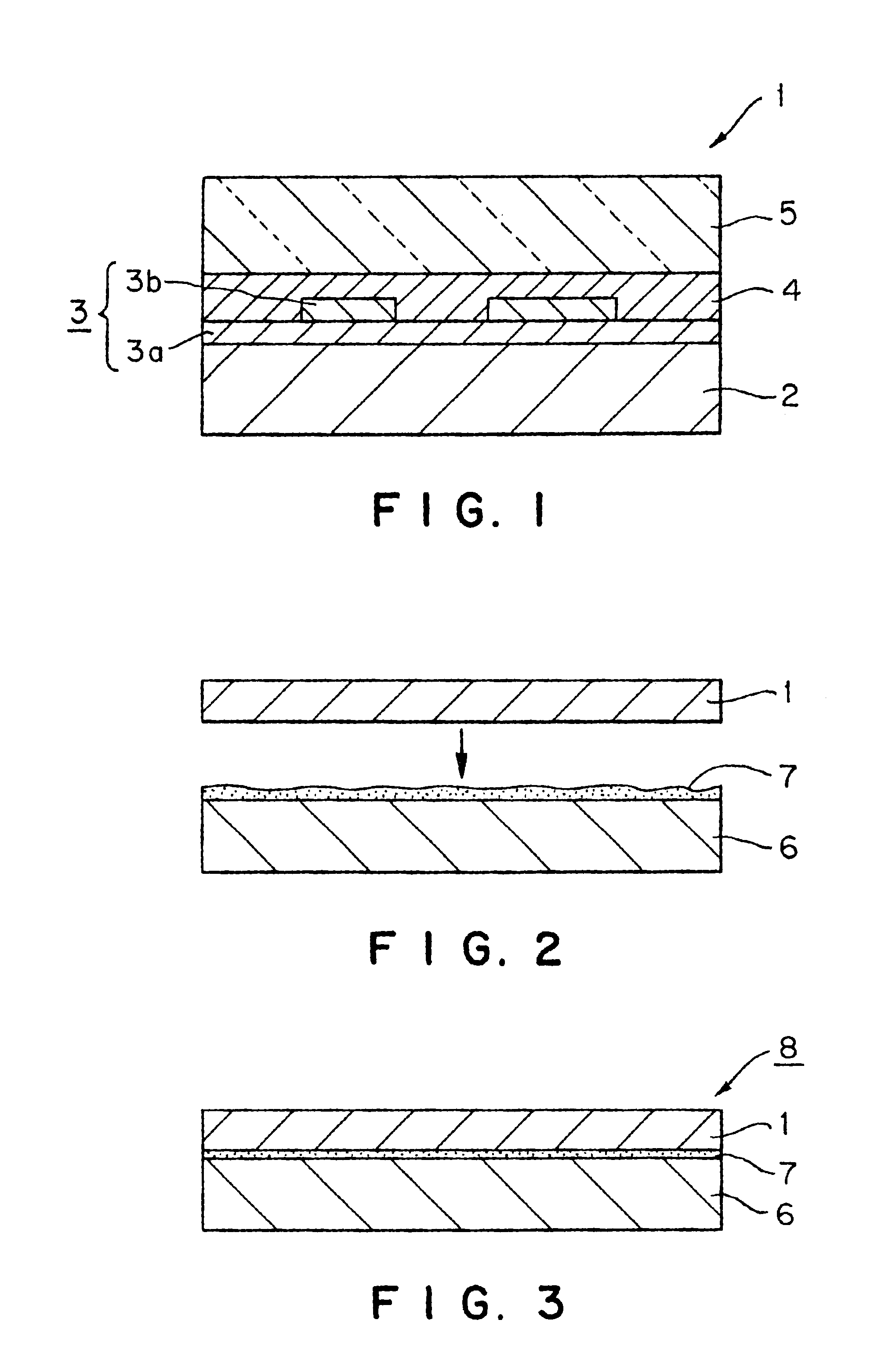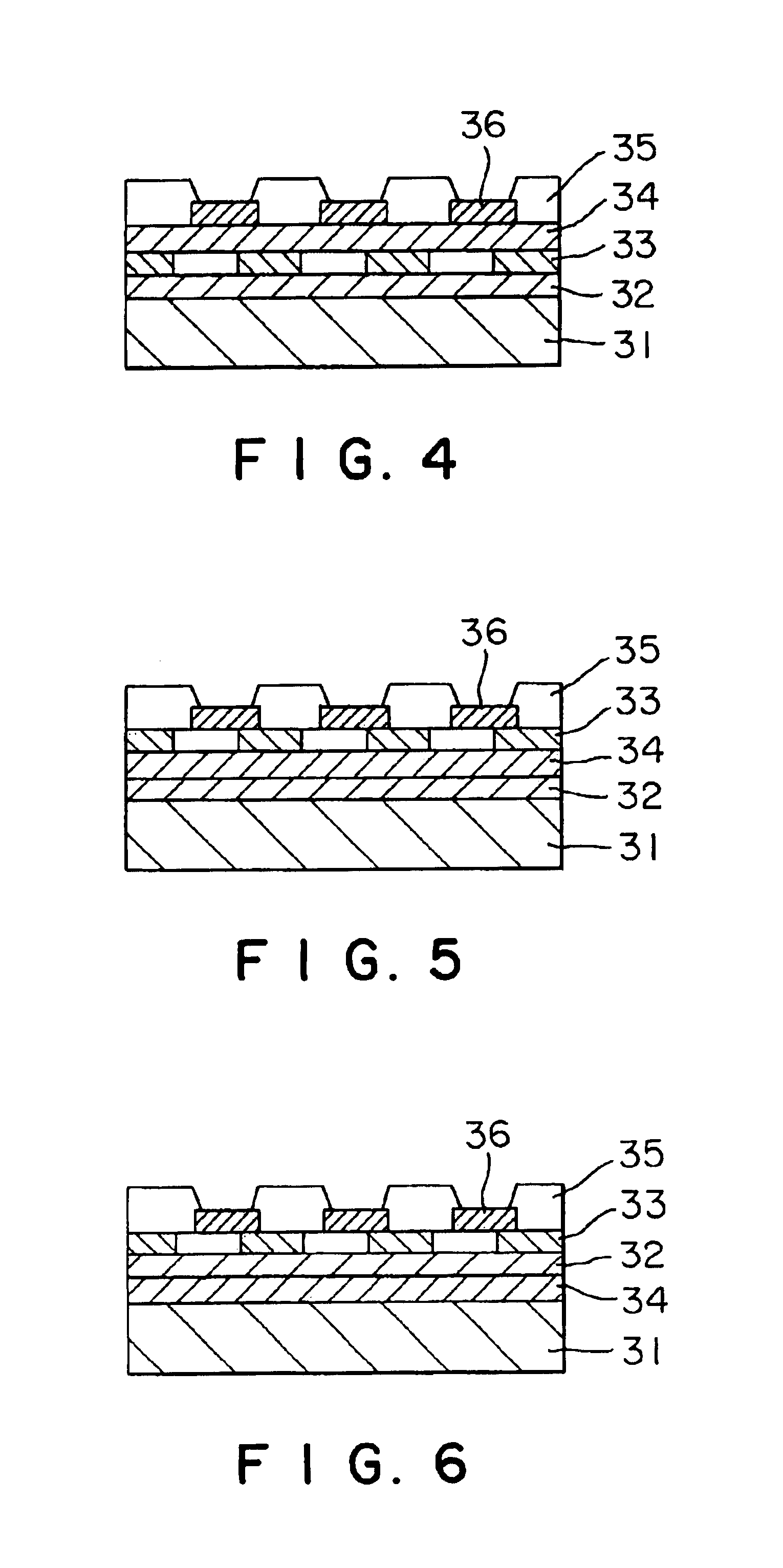Decorative material
a technology of decorative materials and protective layers, applied in the field of decorative sheets, can solve the problems of loss of high hardness characteristic of electron beam-cured resins, excessive softness of whole resins, and scratch resistance of protective layers
- Summary
- Abstract
- Description
- Claims
- Application Information
AI Technical Summary
Benefits of technology
Problems solved by technology
Method used
Image
Examples
example a1
An impregnated paper GF601 manufactured by Kohjin Co., Ltd. was provided as a base paper for a decorative paper which is a decorative sheet common to examples and comparative examples. A woodgrain print was provided using an ink for a pattern (HAT ink, manufactured by The Inctec Inc.) at a coverage of 5 g / m2 on one side of the base paper by gravure printing.
An acrylic resin (CFF primer, manufactured by Showa Ink Ind. Co., Ltd.) was coated at a coverage of 2 g / m2 by gravure printing on the print layer to form a primer layer. Next, an electron beam-curable resin, which is a high crosslinking (average molecular weight between crosslinks: 150) ionizing radiation-curable resin and has the following composition, was coated by gravure reverse coating at a coverage of 20 g / m2, followed by electron beam irradiation under conditions of acceleration voltage 175 kV and 5 Mrad to prepare a decorative sheet.
(Electron beam-curable resin layer)Bifunctional acrylate monomer40 pts. wt.Trifunctional a...
example a2
A blend of a butyral resin with a urethane resin (Bu Primer, manufactured by Showa Ink Ind. Co., Ltd.) was coated at a coverage of 2 g / m2 by gravure printing on a print layer provided on a base paper to form a primer layer. In this under coat, the blending ratio of the butyral resin to the urethane resin was regulated to 1:1. Next, an electron beam-curable resin, which is a high crosslinking (average molecular weight between crosslinks 150) ionizing radiation-curable resin and has the same composition as described in Example A1, was coated and irradiated in the same manner as in Example A1. Thus, a decorative sheet was prepared.
examples a3 to
A7 and Comparative Examples A5 to A9
Decorative materials were prepared in the same manner as in Example A1, except that only the primer layer was changed. The decorative materials thus obtained were evaluated in the same manner as described above. For the primer layers, the chemical constitution, properties, and evaluation results of the primer layer are shown below. The tensile test of the primer layer was carried out in the same manner as described above.
TABLE A2Ex. A3Ex. A4Ex. A5Ex. A6Ex. A7Primer layerButyral / urethaneUrethane / polyesterUrethane / polyesterUrethaneAcryl / urethanesystem = 1 / 1system (1) = 1 / 1system (2) = 1 / 2system (1)system = 1 / 1Average molecular5,000 / 2,00030,000 / 3,00030,000 / 3,00020,00028,000 / 3,000weightYield stength, kgf1.101.712.401.652.05Breaking strength,2.302.432.611.952.25kgfCello-Tape adhesion100 / 100100 / 100100 / 100100 / 100100 / 100
Compositions for the formation of the primer layers were as follows.
PUM
| Property | Measurement | Unit |
|---|---|---|
| Temperature | aaaaa | aaaaa |
| Temperature | aaaaa | aaaaa |
| Length | aaaaa | aaaaa |
Abstract
Description
Claims
Application Information
 Login to View More
Login to View More - R&D
- Intellectual Property
- Life Sciences
- Materials
- Tech Scout
- Unparalleled Data Quality
- Higher Quality Content
- 60% Fewer Hallucinations
Browse by: Latest US Patents, China's latest patents, Technical Efficacy Thesaurus, Application Domain, Technology Topic, Popular Technical Reports.
© 2025 PatSnap. All rights reserved.Legal|Privacy policy|Modern Slavery Act Transparency Statement|Sitemap|About US| Contact US: help@patsnap.com



